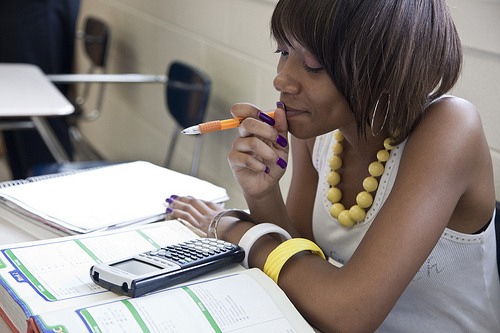Innovations High School is breaking all the rules as it opens in Salt Lake City, Utah this fall. The public school runs year-round and allows students to take classes in the format, time, and pacing they choose.
Students may take classes in a traditional classroom at their assigned local high school or use a digital curriculum combined with access to teachers on campus for aid and accountability. Students can also select courses at a career and technology center or at South Lake Community College, both attached to the high school.
“What we’re doing here has never been done in the country,” said Innovations High Principal Kenneth Grover.
Grover says 62.1 percent of his district’s students are from families at or below the federal poverty level. Twenty-four percent of Utah students drop out of high school, according to the Utah Office of Education.
“Most people don’t talk about what we can do from the inside to make the changes to better meet the needs of kids,” Grover said. “We’re saying ‘Hey, own your school. Come to class every day and engage in the curriculum as long as you need to.”
Self-Directed Learning
Students must spend at least four hours a day in the school building, and have access to any teacher all day.
“Because of family dynamics or jobs, some students are choosing to come early in the morning and leave by noon or come in at one and leave by six,” Grover said.
Students sign up for eight credits per year and take up to five classes at a time. The digital curriculum—a suite of classes called GradPoint, from a private vendor—allows parents and teachers to track students’ progress online.
“Parents can see at any time exactly where students are in the curriculum and how they are doing, instead of waiting until midterms to find out if they are flunking or not,” Grover said. “What better way to get accountability?”
Students are free to create social activities and clubs, and they may still compete on their assigned high school’s athletic teams. They may also take classes at their assigned high schools, such as choir or band.
Self Control, Cost Control
Judi Clark, executive director of Utah Parents for Choice in Education, dismisses critics’ claims that students are not mature enough to make these decisions about their education.
“Traditionally, people have underestimated students and their parents and how involved they want to be in their education,” she said.
Grover rejects the idea that breaking ground requires breaking the bank. Innovations received no extra grants or more funding than any public school in Utah, the state ranked last in the nation in per-pupil spending according to the 2010 U.S. Census, at approximately $6,700 per student.
“If I can pull it off here with the state of Utah funding, I can pull it off, guaranteed, in any state in the country,” he said.
Image by the Gates Foundation.




